WATCH: What Victoria Falls can teach us about the effects of climate change
In the countdown to the 50th anniversary of Earth Day, “Good Morning America” and our partner National Geographic present “Extraordinary Earth: 20 in 2020.” We will visit 20 amazing places around the globe, starting with Victoria Falls, to learn about our evolving planet. ABC News' chief meteorologist Ginger Zee reports live for "GMA" from Victoria Falls, Zimbabwe, to see the impact of extreme weather on these majestic falls.
This is one of the seven wonders of the natural world: Victoria Falls.
Mist rises from Victoria Falls.
Standing at 354 feet tall, with rushing water plummeting approximately 34 stories, Victoria Falls is the world’s largest sheet of falling water and separates the countries of Zambia and Zimbabwe. The sound and mist from the falls can be heard and seen, respectively, for miles.
ABC News chief meteorologist Ginger Zee is exploring 20 of the world's most beautiful and vulnerable places to understand how our changing climate is affecting the planet.
Rainbows peek amid the mist from Victoria Falls.
For nearly 2 million years, the massive waterfall, located on the Zambezi River, has cascaded over the lip of a large plateau of rock.
A rainbow leaps from the mist of Victoria Falls.
And many travel from all over the world to witness the splendor of the falls, making tourism a huge part of the economy in the region.
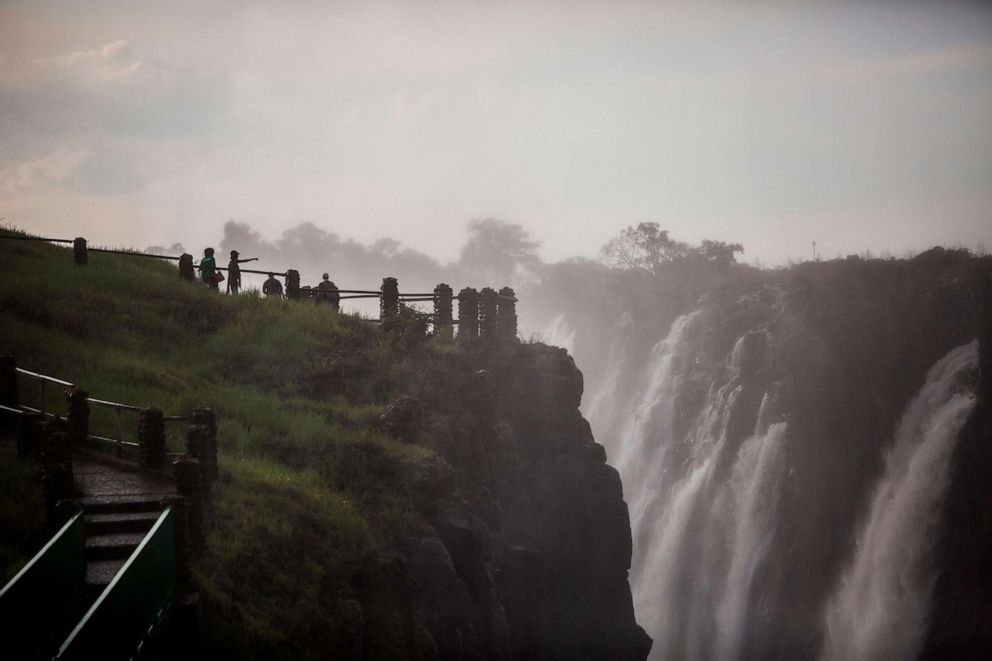
AFP via Getty Images
Tourists view the majestic Victoria Falls in Livingstone, Zambia, Jan. 23, 2020.
Some visitors even go to extreme lengths to get an epic picture at several of the falls’ live on the edge to get an epic picture at several of the falls’ natural rock pools: Devil’s Pool and Angel’s Pool.
But the falls are more than just the backdrop to an epic Instagram post. They are also a barometer for the health of the ecosystem in the region.
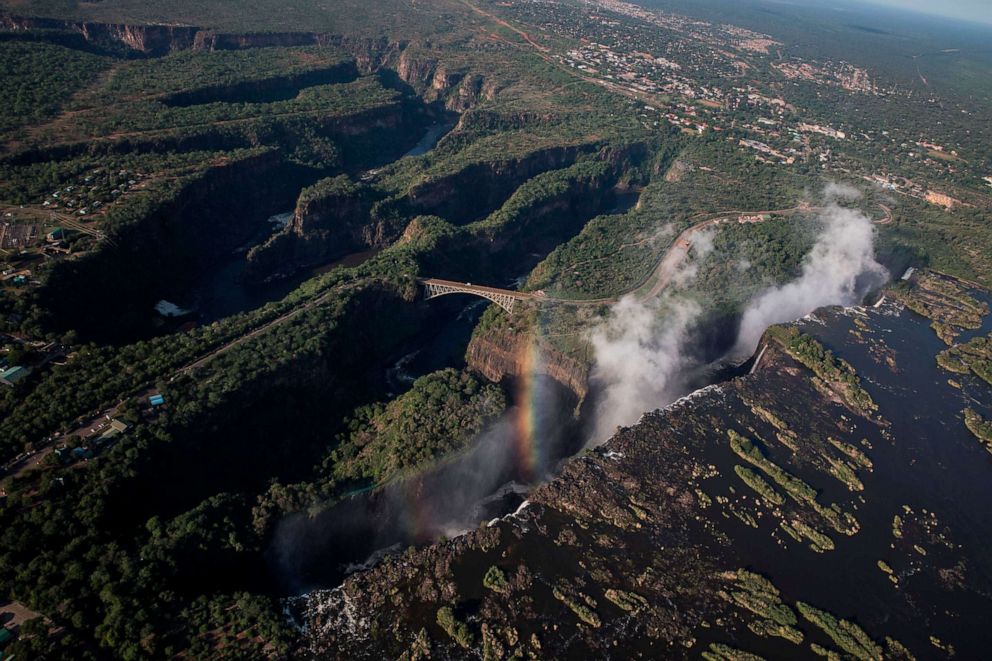
AFP via Getty Images
An aerial view of Victoria Falls in Livingstone, Zambia, Jan. 23, 2020.
“The Zambezi River feeds into this fall, and along the Zambezi River there are millions of people and animals like elephants, giraffes and buffalo who rely on this water source,” said National Geographic’s Nichole Sobecki, a world-renowned photographer based in Africa. “This waterfall is really a way of purifying the source and sustaining the lives of those who [live] along its banks.”
MORE: Here's where you should book a trip in 2020, according to National Geographic
However, in December 2019, the future of the falls came into question when a shocking photo of the falls went viral, which led to reports claiming that Victoria Falls was drying up.
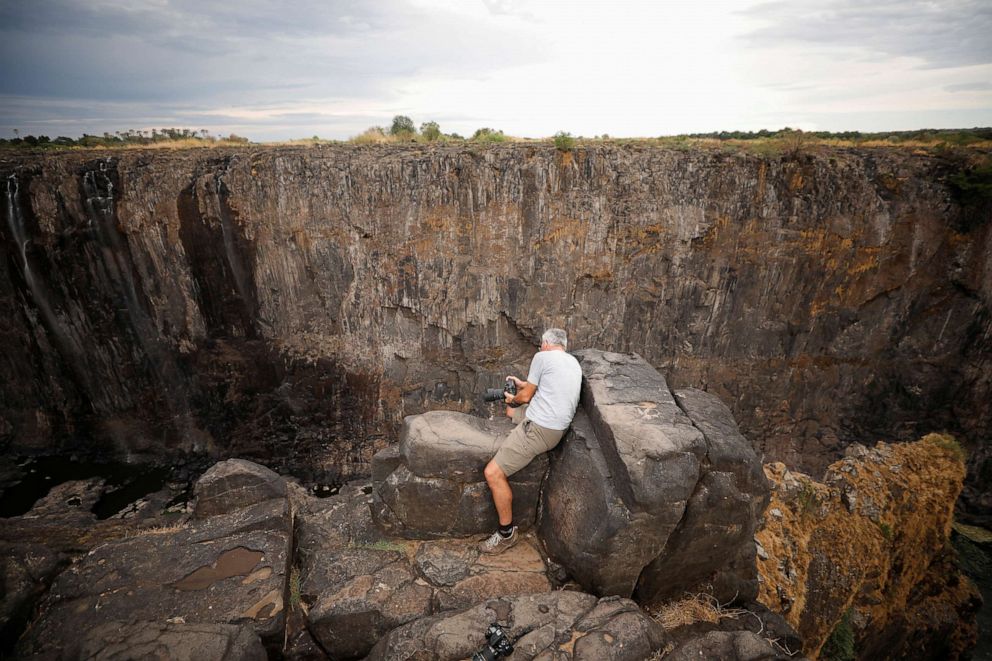
Mike Hutchings/Reuters
Visitors take pictures before dry cliffs following a prolonged drought at Victoria Falls, Zimbabwe, Dec. 4, 2019.
And that’s just not true. Year-round, the Victoria Falls experiences a cycle of wet and dry seasons for water flow, and the photos that were circulated online were taken during the falls’ dry season. Right now, the falls are flowing at 12.5 gallons per minute.
But, some scientists, including Dr. Kaitano Dube, have found that the weather has gotten more extreme. Hotter seasons have gotten longer.
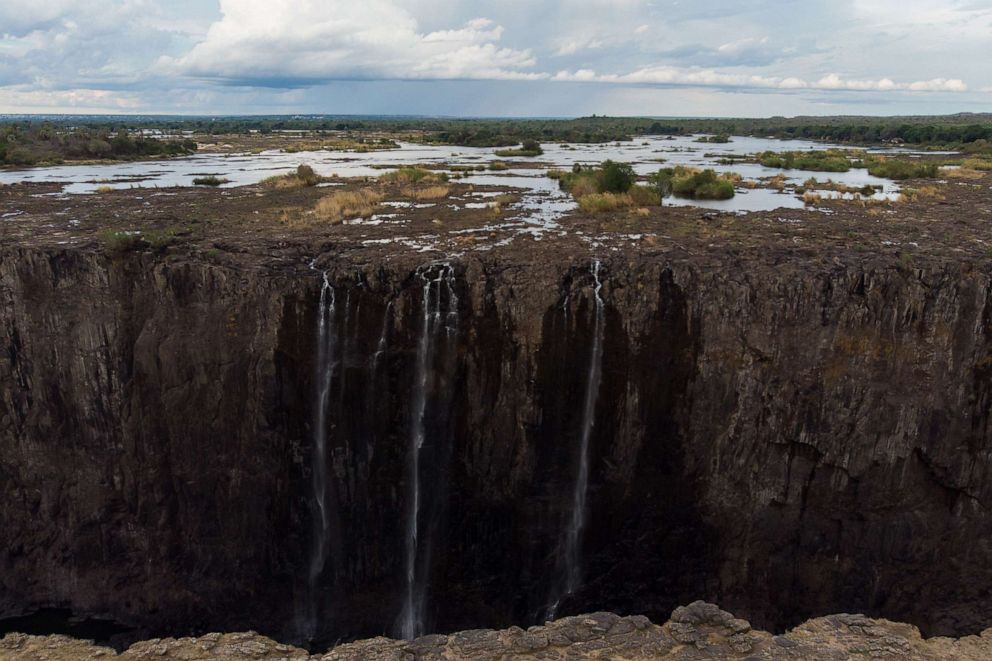
Zinyange Auntony/AFP via Getty Images
A general view of Victoria Falls, in Zimbabwe, Dec. 10, 2019.
“It’s a problem to the people, the animals that depend on the Zambezi River, and also the economies that’s also dependent on the Zambezi river,” Dr. Dube told “GMA.”
Some scientists have also described the weather phenomenon as “climate whiplash,” sudden shifts from one set of weather conditions to another.
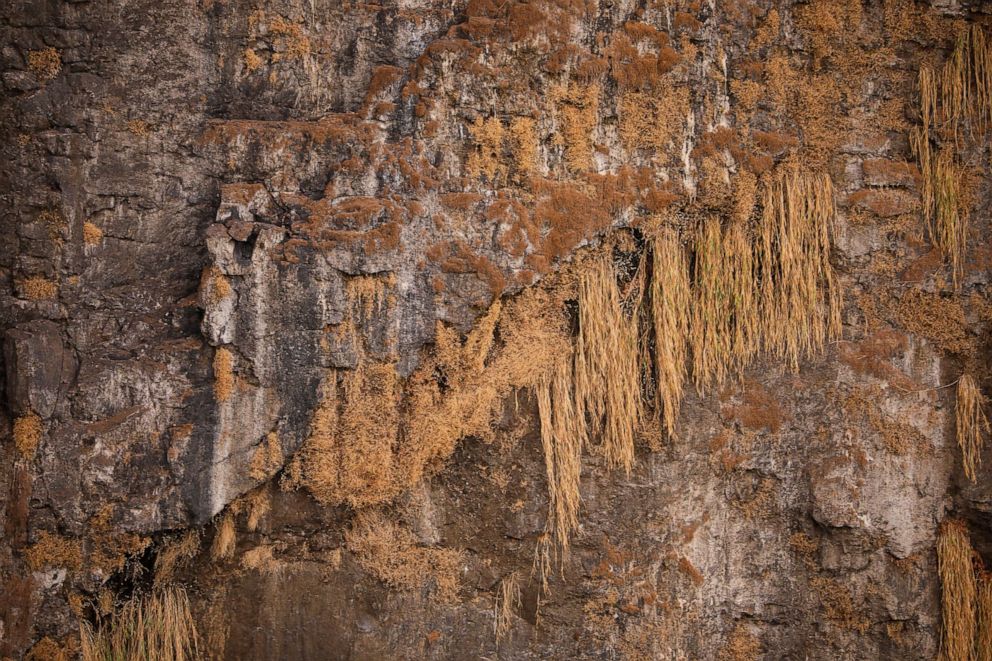
Mike Hutchings/Reuters
Dry cliffs are seen following a prolonged drought at Victoria Falls, Zimbabwe, Dec. 4, 2019.
“Temperatures on the continent are rising faster than the global average,” said Sobecki. “We’re also seeing increasingly frequent and extreme drought, extreme weather events that are happening at a far greater frequency than we’ve ever seen before.”
MORE: 5 Instagrammable destinations to visit in 2020 that aren't overrun by tourists
Climate whiplash has taken a toll on wildlife in the region.
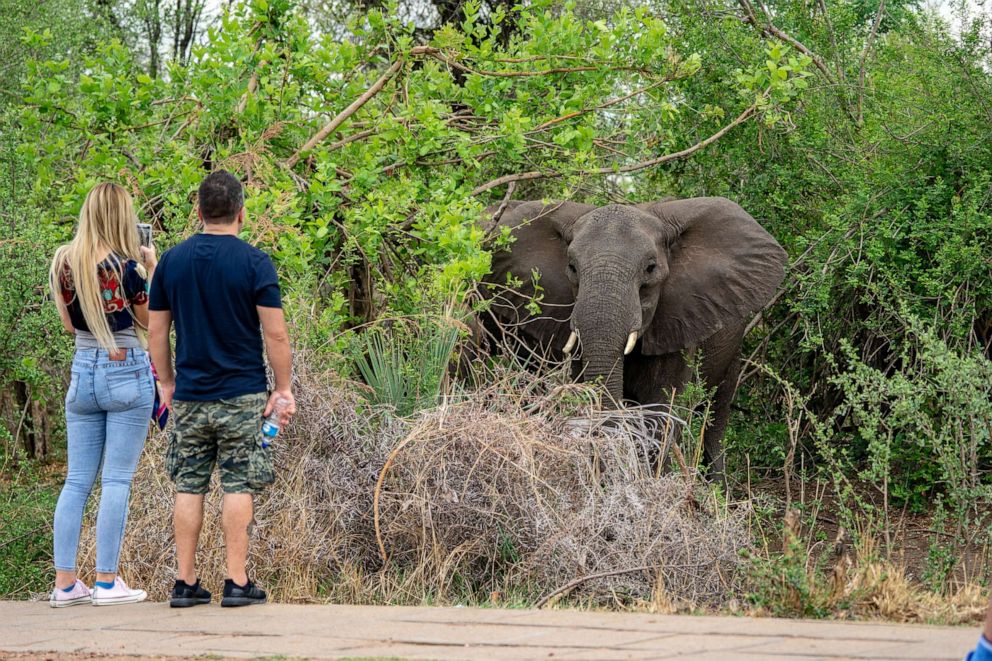
Zinyange Auntony/AFP via Getty Images
Tourists take a picture of an elephant near the majestic Victoria Falls, Zimbabwe, Victoria Falls, Nov. 13, 2019.
“The drought in Zimbabwe in the fall that we had over 200 elephants that died from starvation because they couldn’t access water,” said Sobecki. “We had tremendous loss of wildlife from this past drought, and this system is growing increasingly fragile.”
It’s also affected tourism, which is key to the villages and economy in the region.
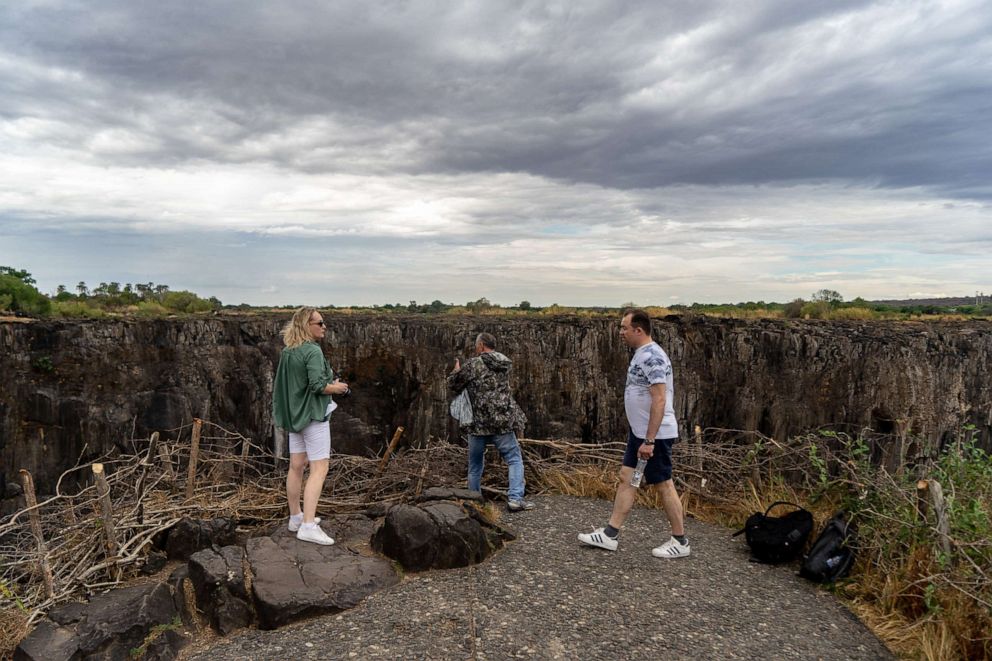
Zinyange Auntony/AFP via Getty Images
Tourists view the majestic Victoria Falls, with a larger part of it without the flowing blanket of water due to a drought in the region, Victoria Falls, Zimbabwe, Nov. 13, 2019.
But despite these extreme weather events, which are transforming people’s lives, Sobecki says people in the region are resilient.
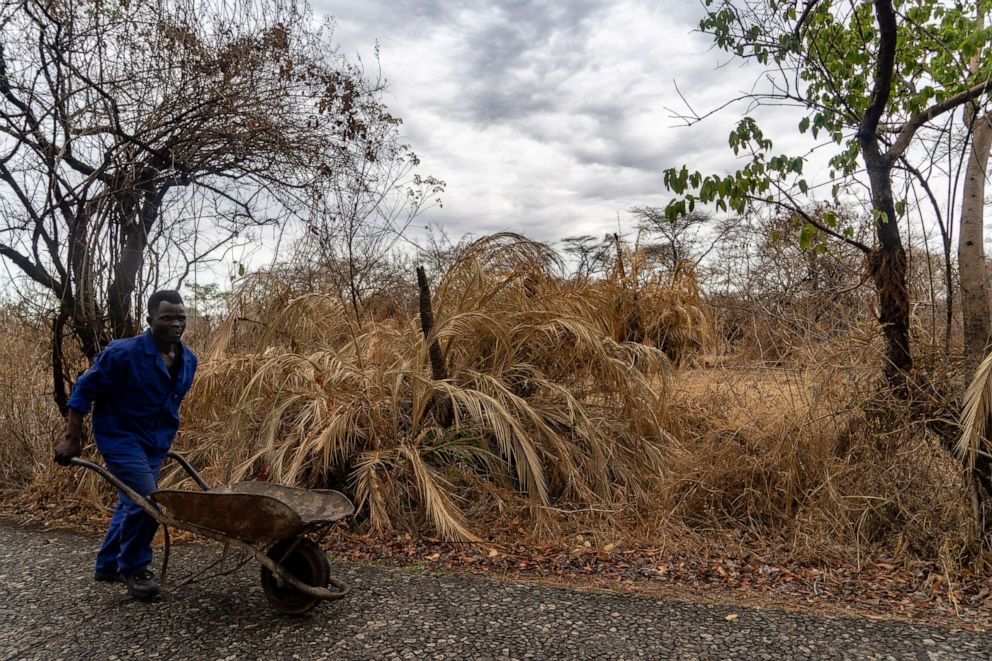
Zinyange Auntony/AFP via Getty Images
A parks employee work on renovations along paths in the rain forest at the Victoria Falls, a major tourism attraction for Zimbabwe, Victoria Falls, Zimbabwe, Nov. 13, 2019.
“They know how to adapt to the normal seasonal changes, but when those challenges and catastrophes are happening almost every year or every other year, that breaks down your ability to sustain yourself, sustain your family and to stay living where you are,” she said.
Seeing the falls up close in all their majesty and the stunning beauty as well as how integral the falls are to the ecosystem and wildlife in the region teaches an important lesson in respecting our planet.
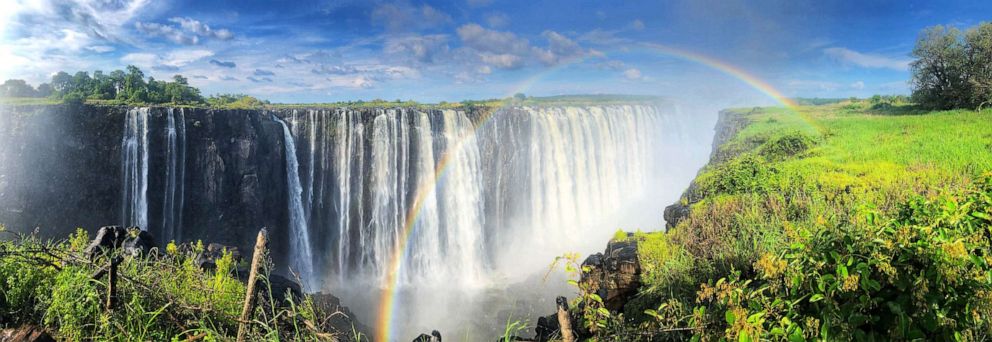
Maria Stefanopoulos
Rainbow extends above Victoria Falls on a sunny day.
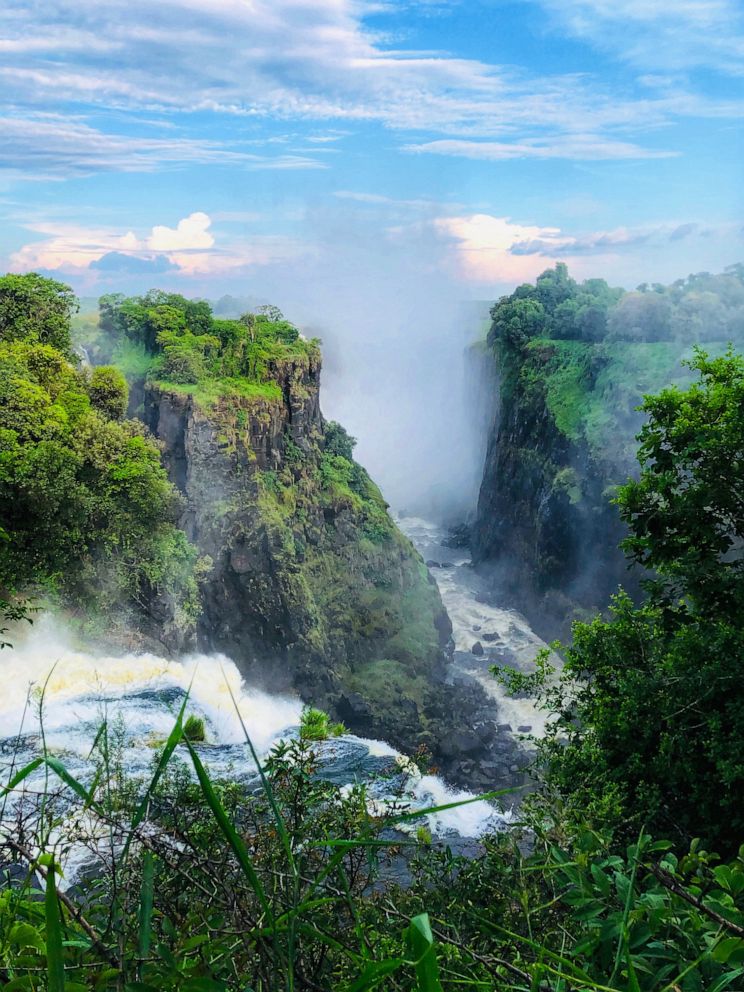
Maria Stefanopoulos
Mist descends on Victoria Falls.
ABC News' Amr Alfiky contributed to this report.